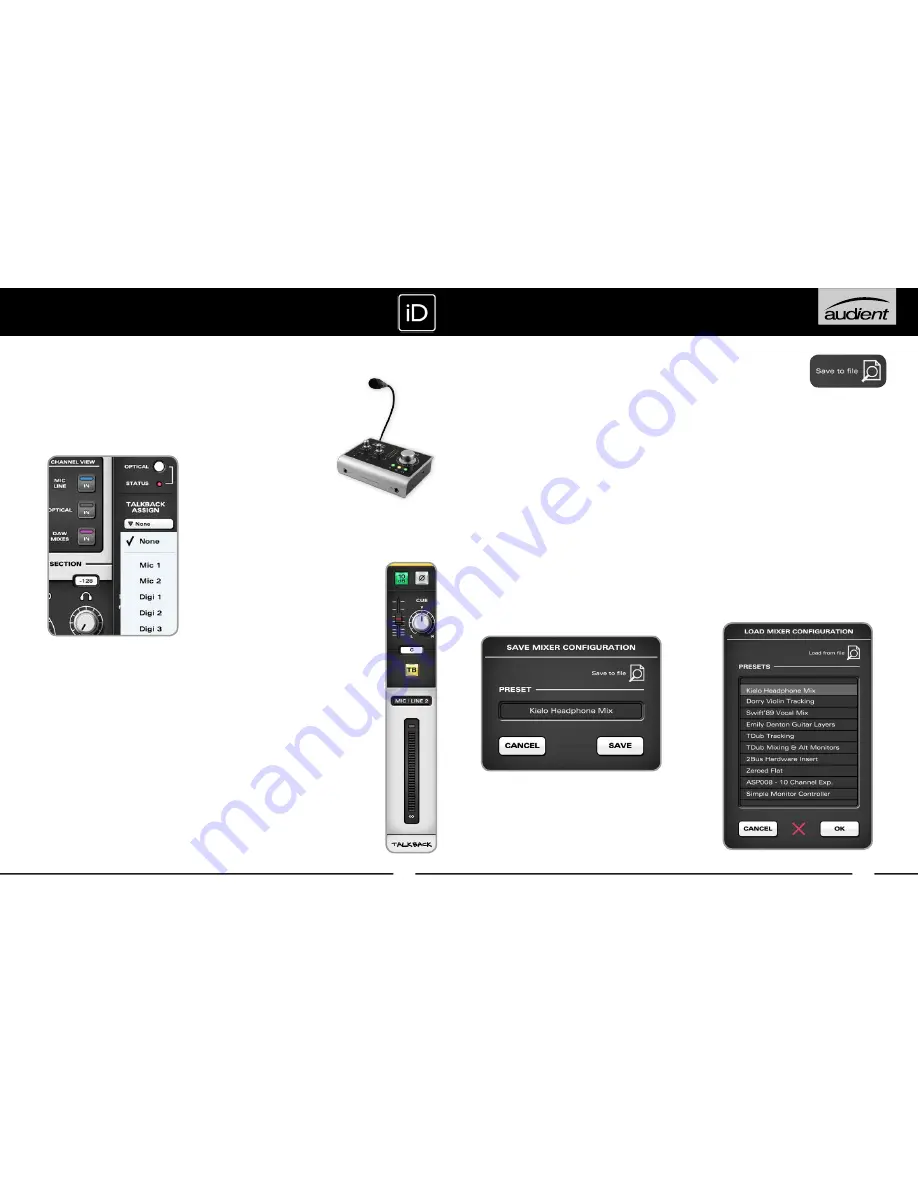
26
25
Saving & Loading Mixer Presets
Mixer presets can be saved and loaded in
two ways:
• Using the buttons at the bottom of the
system panel
• Using standard keyboard shortcuts
• Save:
Mac - Cmd + S
Windows - Ctrl + S
• Load:
Mac - Cmd+ O
Windows - Ctrl + 0
Saving a Mixer Configuration
You are able to save mixer configurations
as a preset for easy access. Your preset
can be named by double clicking in the box.
For information on where preset files are
automatically saved, please visit our help
desk.
By using the Save to File
button you can save
preset files to any
folder you desire - allowing you to contain
them within your DAW session folder for
example (making recall easier).
Loading a Mixer Configuration
Loading a preset is very simple, just click
on the load button in the System Panel and
select one of your previously named files,
double clicking will also load a preset. To
rename a preset, click to highlight and then
after a pause, click again to rename. To
delete, click to highlight and then click on
the X (delete) button at the bottom.
SOFTWARE FEATURES
Assigning Talkback
When a channel is assigned as talkback
source in the iD mixer application system
panel, the selected mixer channel strip
updates to become a talkback channel.
Channels will be presented in the talkback
assign menu as per their labelling in the
mixer scribble strip (console tape). As such
they are easy to identify.
For many who record vocalists, one input
for the artist will be enough so we suggest
using a talkback microphone in Input 2,
however any of the digital inputs can also be
used.
Gooseneck Microphone Use
If recording a vocalist or
drummer (with digital
expansion) one microphone
channel on the
iD14 provides
the perfect place
to use a gooseneck
talkback microphone. If it is a
condenser gooseneck make sure you have
the 12VDC power plugged in as phantom
power cannot be used on bus power.
Talkback Channel Strip
When an assigned channel
converts to talkback operation,
the cue send level and pan
remain, allowing you to route
the talkback signal to artists via
the cue mix. A routing box
shows which active channel is
set as talkback.
A secondary talkback button
is located on the talkback
channel which can be used
to trigger talkback whilst
setting up the software mixer.
You can also assign the
talkback switch to the iD button
in the master section.
SOFTWARE FEATURES























